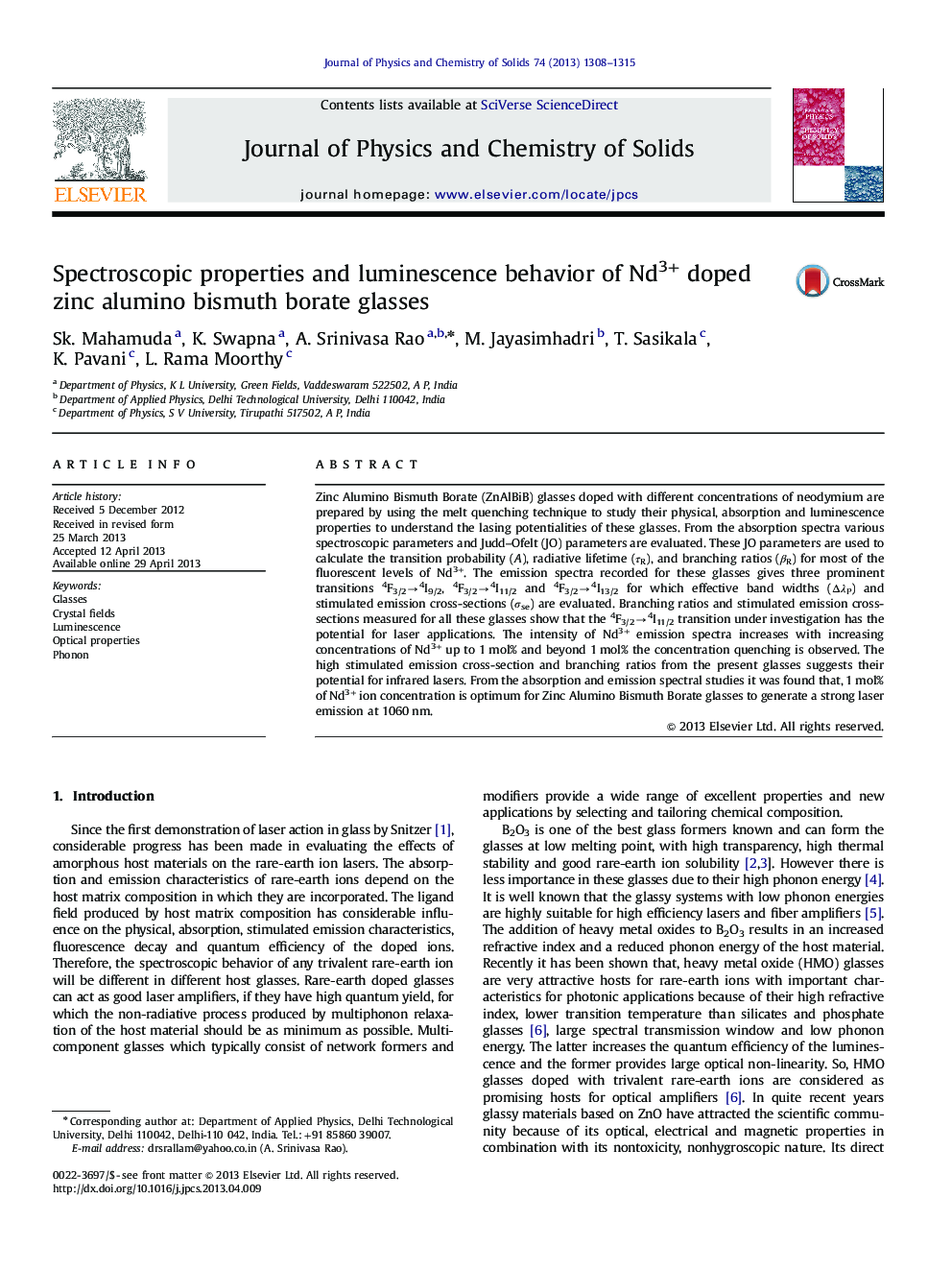| Article ID | Journal | Published Year | Pages | File Type |
|---|---|---|---|---|
| 1516308 | Journal of Physics and Chemistry of Solids | 2013 | 8 Pages |
•Nd3+ doped ZnAlBiB glasses have been synthesized using melt quenching technique.•Radiative properties for the prepared glasses have been calculated using JO theory.•Branching ratio's and emission cross-sections are evaluated for laser transitions.•1 mol% Nd3+ concentration was found to be the optimum for the efficient laser action.
Zinc Alumino Bismuth Borate (ZnAlBiB) glasses doped with different concentrations of neodymium are prepared by using the melt quenching technique to study their physical, absorption and luminescence properties to understand the lasing potentialities of these glasses. From the absorption spectra various spectroscopic parameters and Judd–Ofelt (JO) parameters are evaluated. These JO parameters are used to calculate the transition probability (A), radiative lifetime (τR), and branching ratios (βR) for most of the fluorescent levels of Nd3+. The emission spectra recorded for these glasses gives three prominent transitions 4F3/2→4I9/2, 4F3/2→4I11/2 and 4F3/2→4I13/2 for which effective band widths (ΔλP) and stimulated emission cross-sections (σse) are evaluated. Branching ratios and stimulated emission cross-sections measured for all these glasses show that the 4F3/2→4I11/2 transition under investigation has the potential for laser applications. The intensity of Nd3+ emission spectra increases with increasing concentrations of Nd3+ up to 1 mol% and beyond 1 mol% the concentration quenching is observed. The high stimulated emission cross-section and branching ratios from the present glasses suggests their potential for infrared lasers. From the absorption and emission spectral studies it was found that, 1 mol% of Nd3+ ion concentration is optimum for Zinc Alumino Bismuth Borate glasses to generate a strong laser emission at 1060 nm.
Graphical abstractFigure optionsDownload full-size imageDownload as PowerPoint slide
